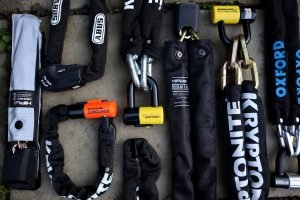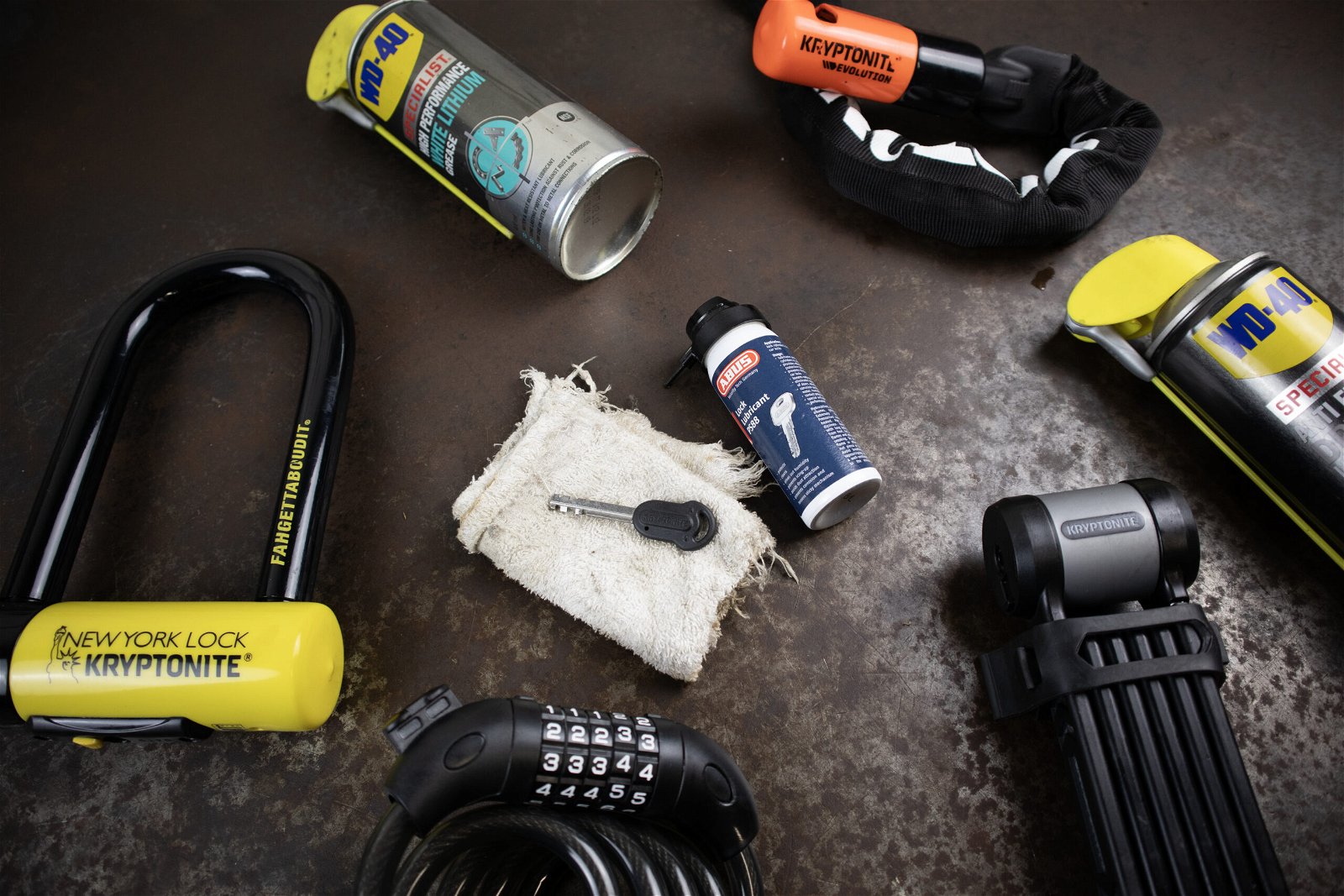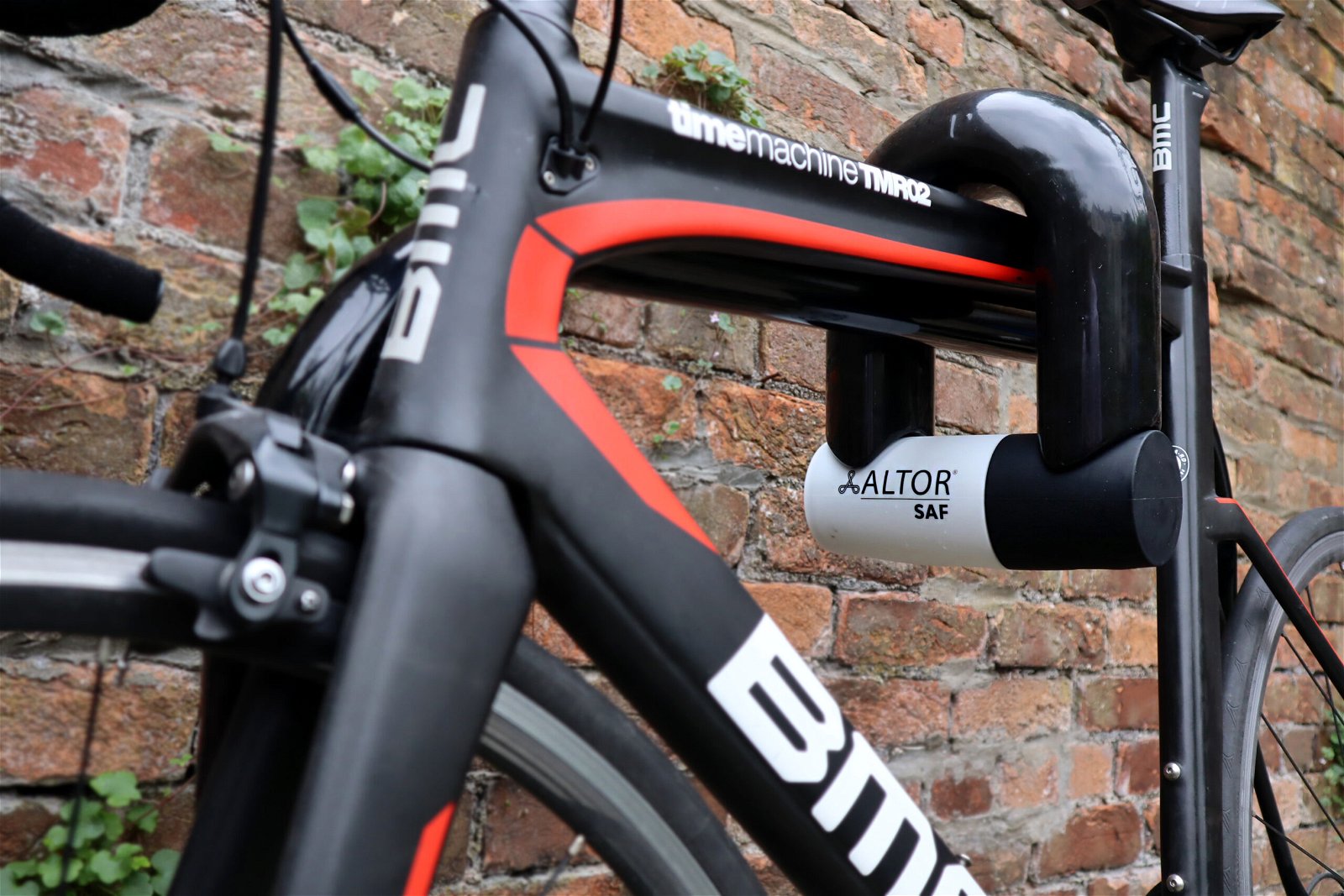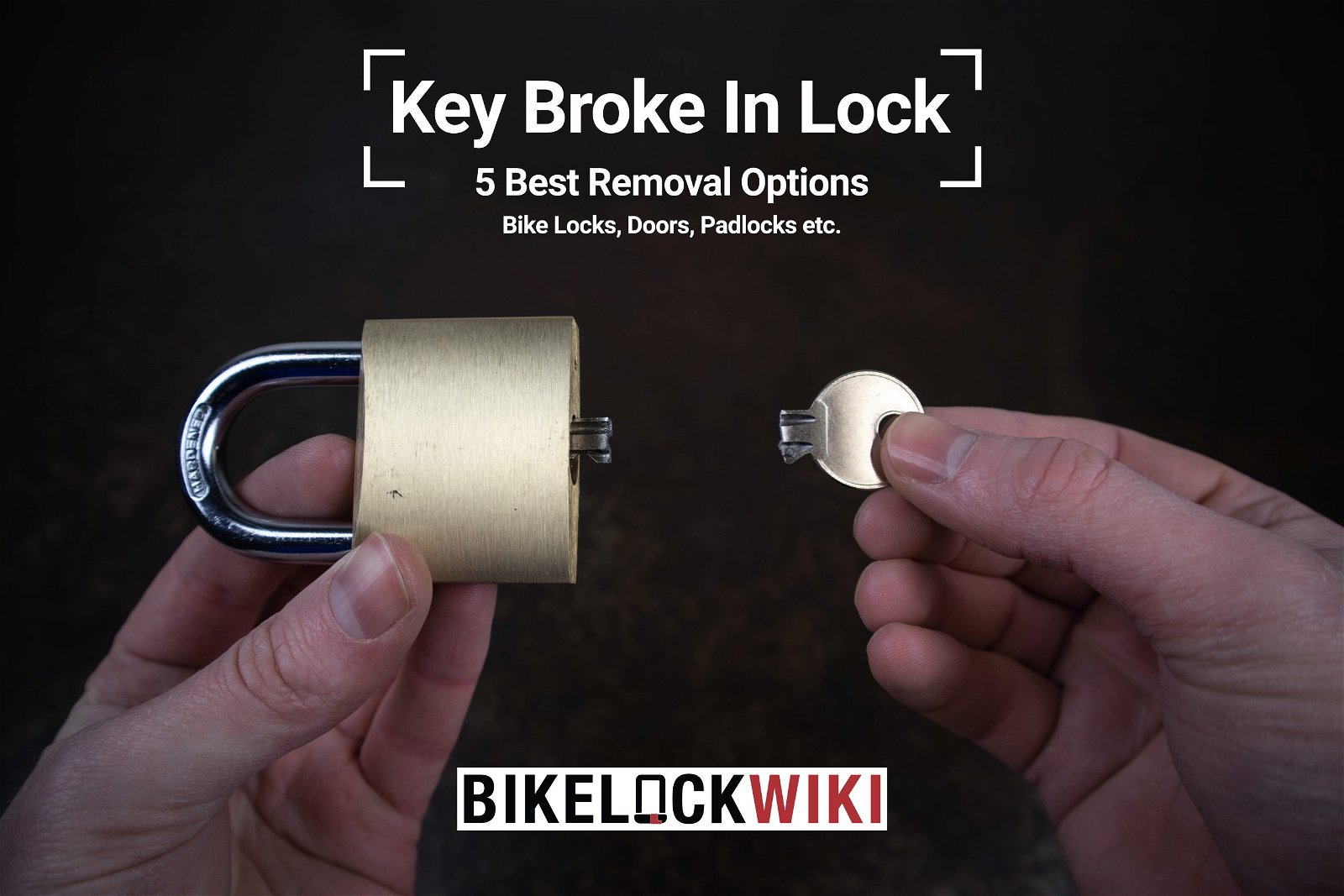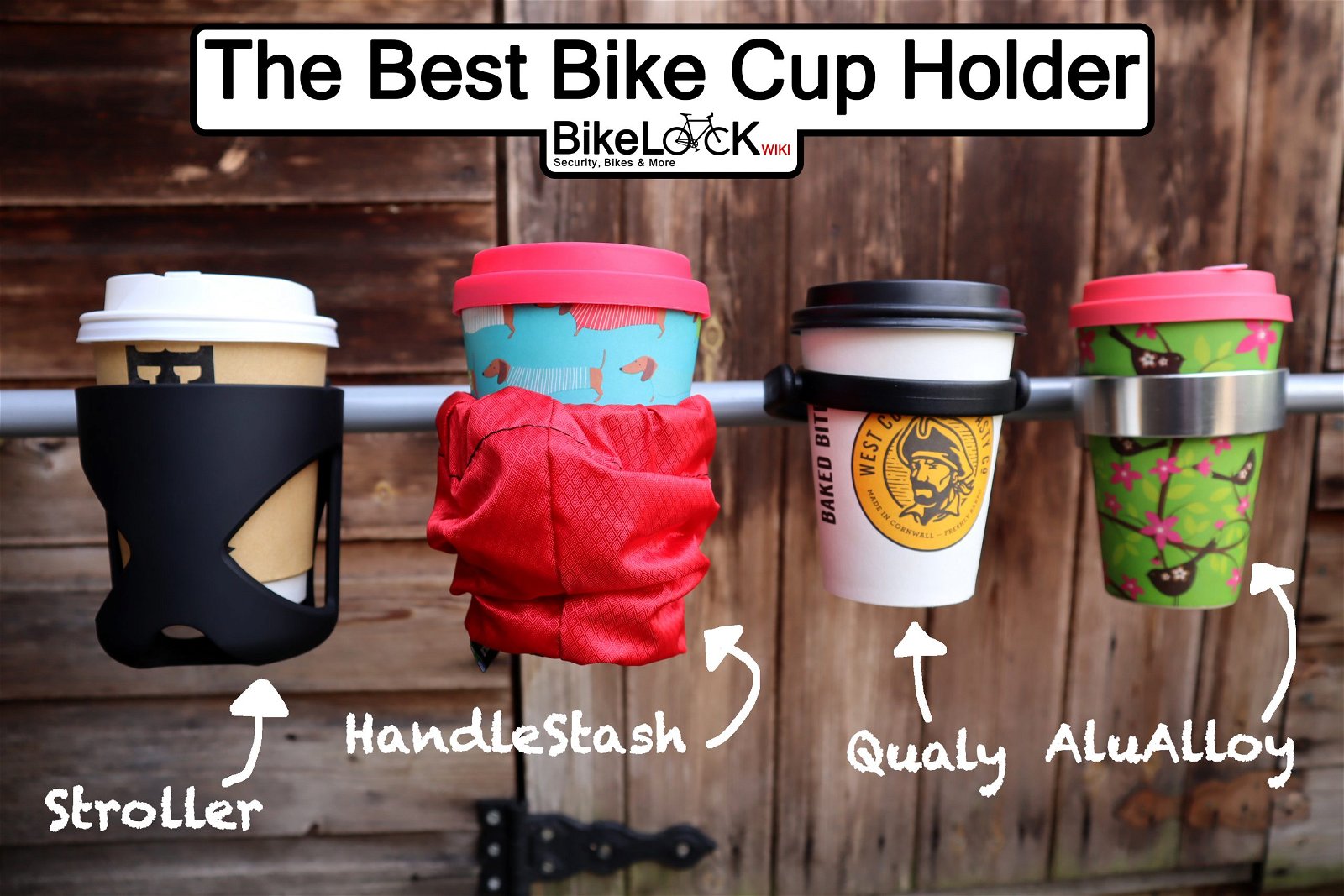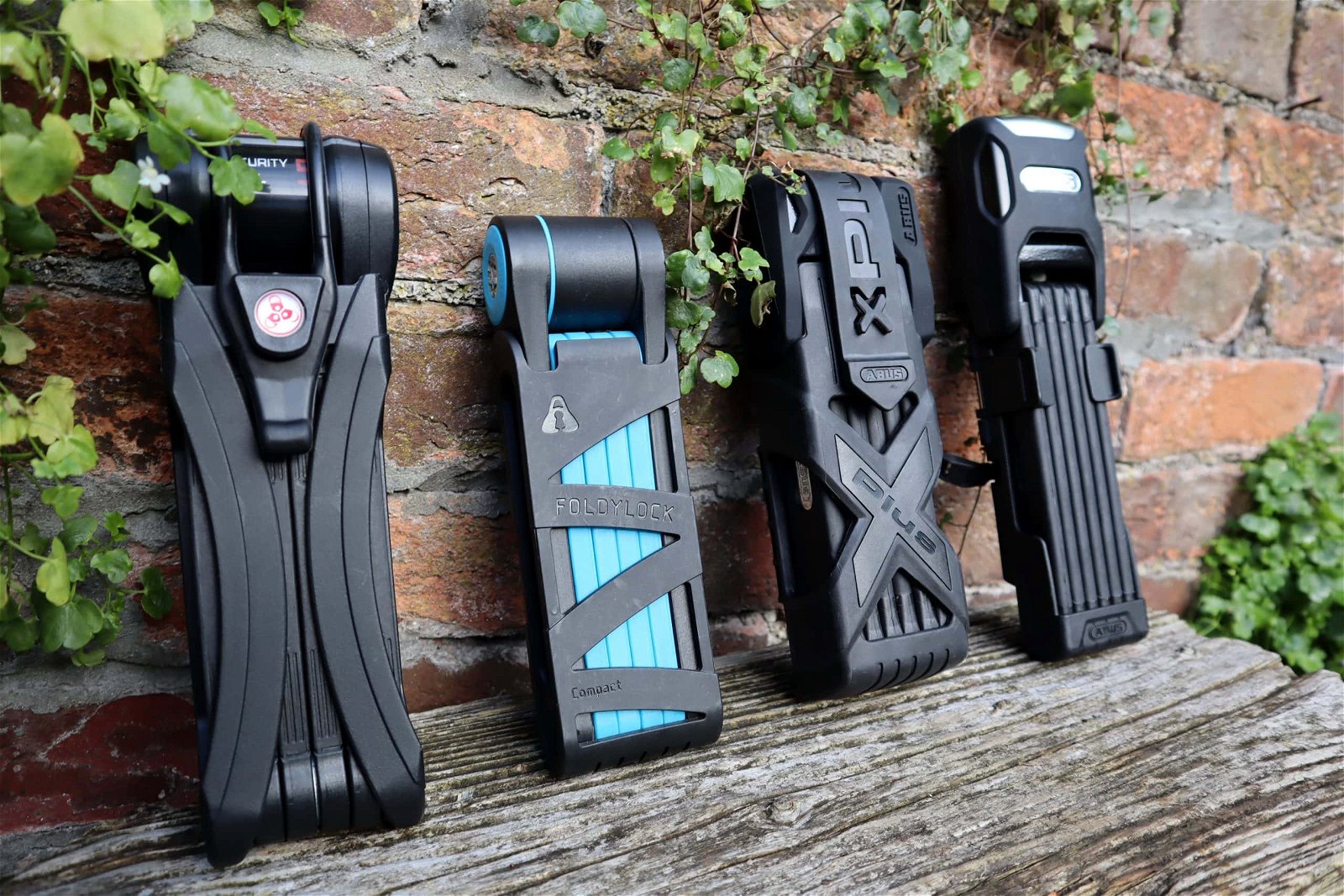An Introduction to Comfort Bikes
If you’ve been considering buying a new bike and are annoyed with the niggling pains you get from riding your existing bike, then a comfort bike could be a very wise choice.
But what are comfort bikes, what makes these bikes more comfortable than others and who are comfort bikes suitable for?
Keep reading and I’ll let you know all of the above, plus a whole load more.
If you have questions regarding comfort bikes, they’ll likely be answered here. And if they’re not, leave a comment below and I’ll find the answer for you!
Let’s get into it.

What Is a Comfort Bike?
Comfort bikes are bicycles designed with their riders comfort as their priority. These comfortable bicycles sit their riders in a more relaxed, upright position which naturally makes these bikes appeal to a wide range of cyclists.
The features of a comfort bike vary from model to model, but in general, most comfort bikes use front suspension forks, wider padded saddles, and angled handlebars designed for easier steering while riding in a more upright position.
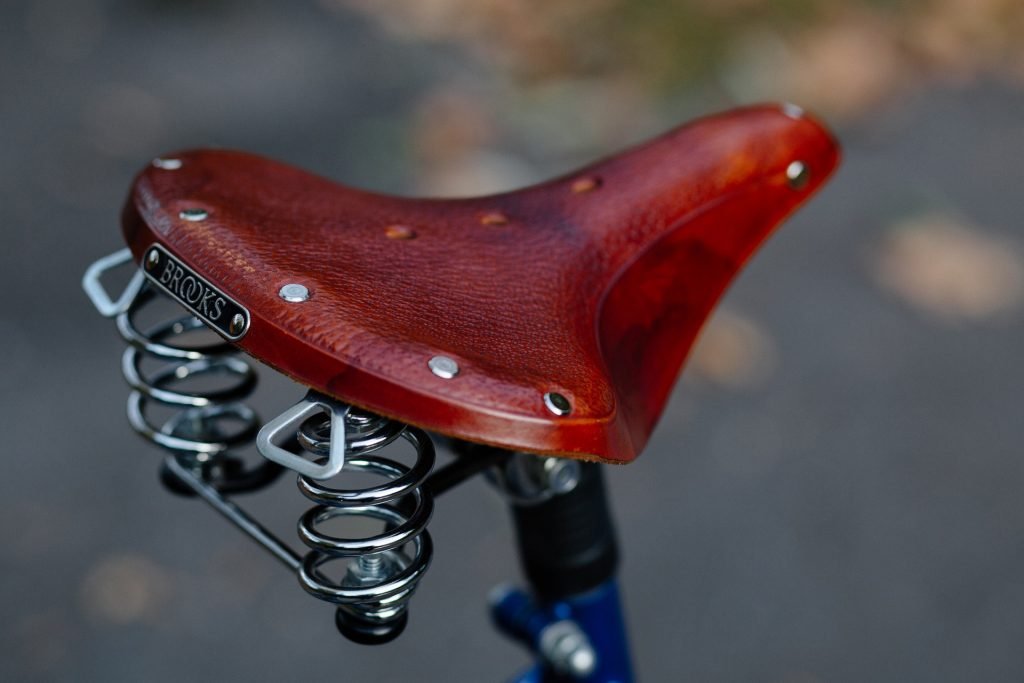
Frames for comfort bikes are modelled after mountain bike designs with a tall head tube allowing the rider to sit upright and taller in the seat.
This ergonomic design reduces the risk of injury or the pain associated with riding a traditional bike. Thus comfort bike is the bike of choice for those with aches, pains, injuries, or flexibility issues.
What Is a Comfort Bike Used For?
Incase you hadn’t already figured it out, comfort bikes are built for your comfort. These bikes aren’t designed for speed or extreme off-road riding. Instead, comfort bikes are designed to get you from A to B without aches and pains or any annoyances.
On a traditional bicycle, riding in a crouched position can be terribly uncomfortable. A comfort bike is designed to be more pleasant, by allowing the rider to sit upright. By often implementing front fork suspension comfort bikes will soften the blows over bumps in the road.
Those who opt for a comfort bike tend to enjoy the low profile, subtle look of these bikes and don’t tend to change components as much as a competitive rider may.
The above features make comfort bikes ideal for:
- Short trips to the shops
- Leisurely rides through the park or along the beach
- Work transportation
- Riding to a friend’s house
- Low-impact exercise
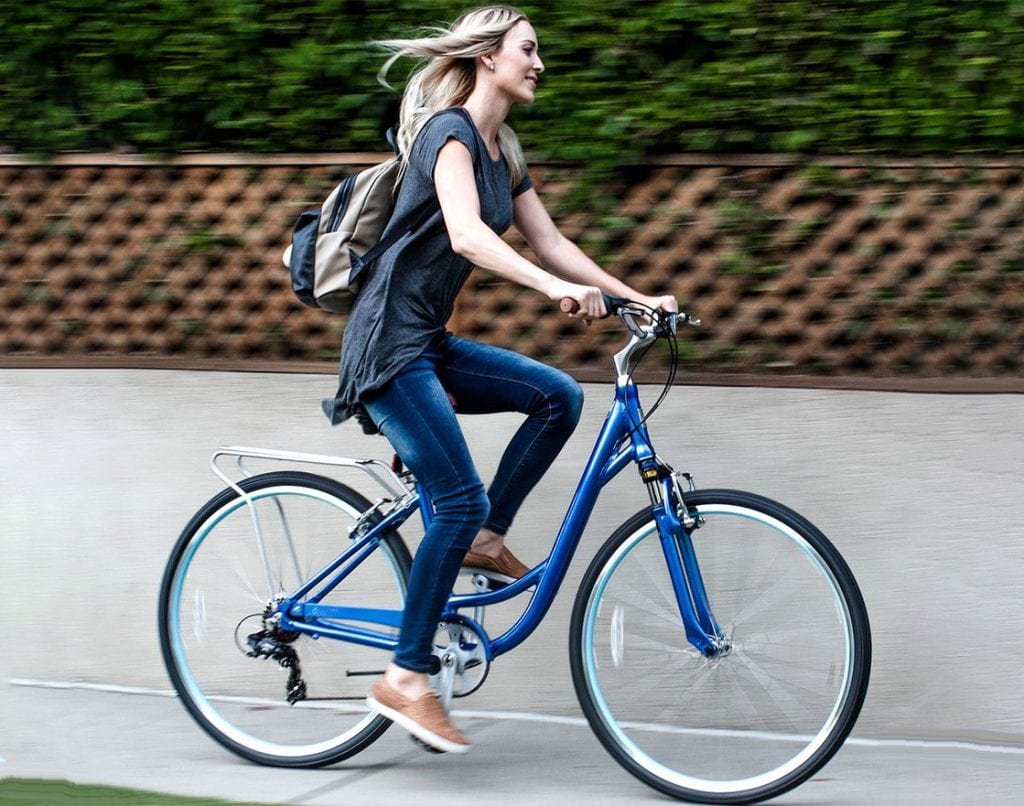
Comfort Bike vs Hybrid Bike
The lines between a comfort and hybrid bike may seem blurred, but it’s actually fairly easy to distinguish between the two.
A comfort bike is built for the most gentle, comfortable cycling and whilst they’re capable of adapting to different terrains, they’re not nearly as versatile as a hybrid bike.
Comfort bikes are visually comparable to cruiser bikes, with their high handlebars, low chunky saddles and a frame which gives the rider a vertical posture.
Whilst many comfort bikes have suspension forks, it’s important not to be fooled by these. I wouldn’t recommend taking a comfort bike onto dirt trails or rocky paths as you would with a hybrid bike.
Essentially if you want to experience off-road riding at the same time as leisurely city commuting, a hybrid will be the bike for you.
With modifications to their tyres, comfort bikes might be able to handle more off-road based terrain, but they are already slower than hybrids and by adding tyres with increased tread you’ll really cap your speed to a minimum.
Recap - What Is a Comfort Bike?
A comfort bike is a hybrid subtype bicycle. These bicycles are designed to provide the most comfortable ride possible which makes them suitable for cyclists who prefer a slower-paced ride.
Comfort bikes take inspiration from a number of different bicycle types including mountain bikes, roadsters and town bikes.
Combining the comfortable features from a number of bike types means that comfort bikes are also suitable for cyclists with existing injuries or medical conditions.
The Features of a Comfort Bike
The frame of any bike is one of the most deciding features for how the bike will perform. As these bikes are built purely for comfort, rather than speed you only really find aluminium and steel frames.
Carbon is reserved for bikes with a sportier purpose and therefore you won’t really find carbon-framed comfort bikes.
The frame of a comfort bike is angled so that the rider sits upright thanks to a tall headtube. This as previously covered makes comfort bikes suitable for those who pursue good posture or have existing back/neck problems.
These comfortable bicycles tend to have a step-through frame, typically found on women bikes, whilst there are some models available for men, there are many more designed for women.
Wheels vary from bike to bike, some comfort bikes have smaller 26-inch (ISO 559) wheels, whereas others use the more popular 700c (ISO 622) wheels which provide a more comfortable ride.
Larger wheels are less likely to be swallowed by a pothole or disturbed by small stones whilst riding, providing a better riding experience.
As for tyres, the size of these will depend upon the size of your bike’s wheels. However, a 35-40mm width tyre is fairly common amongst the majority of comfort bikes.
These tyres will be smooth or semi-slick, which provides less resistance when riding on paved surfaces. However, it does also mean that you have less traction and will need to take care when cycling in wet weather.
Due to the tall headtube, the handlebars of comfort bikes sit high up and are normally slightly flared towards the end, so that your arms and hands are as comfortable as possible whilst riding.
On the handlebars of a typical comfort bike, you can expect to find soft grips, easy action gear shifters (twist gears) and normally a bell and reflector of some kind.
All types of breaks can be found on comfort bikes. Some newer models opt for disc breaks which are responsive in all weather and therefore suitable for commuters. Others use V breaks which aren’t quite as responsive as discs, but are normally very effective.
Your typical comfort bike will have a large cushioned saddle that’s very supportive of the glutes whilst riding and won’t hit any painful pressure spots! Some saddles are sprung, which again increases how comfortable they are.
Alternatively, many seatposts feature a suspension system which reduces any impacts felt through you saddle.
History of Comfort Bikes
The comfort bike is a hybrid bicycle that is a modernized version of the utility roadster that was popular and sold throughout the United Kingdom and the British Empire in the mid-20th century. [1]
By the early 1970s, the exercise boom saw cyclists move away from the larger, heavier road bikes, preferring lighter sport bikes with racing designs or sturdier, load-carrying mountain bikes.
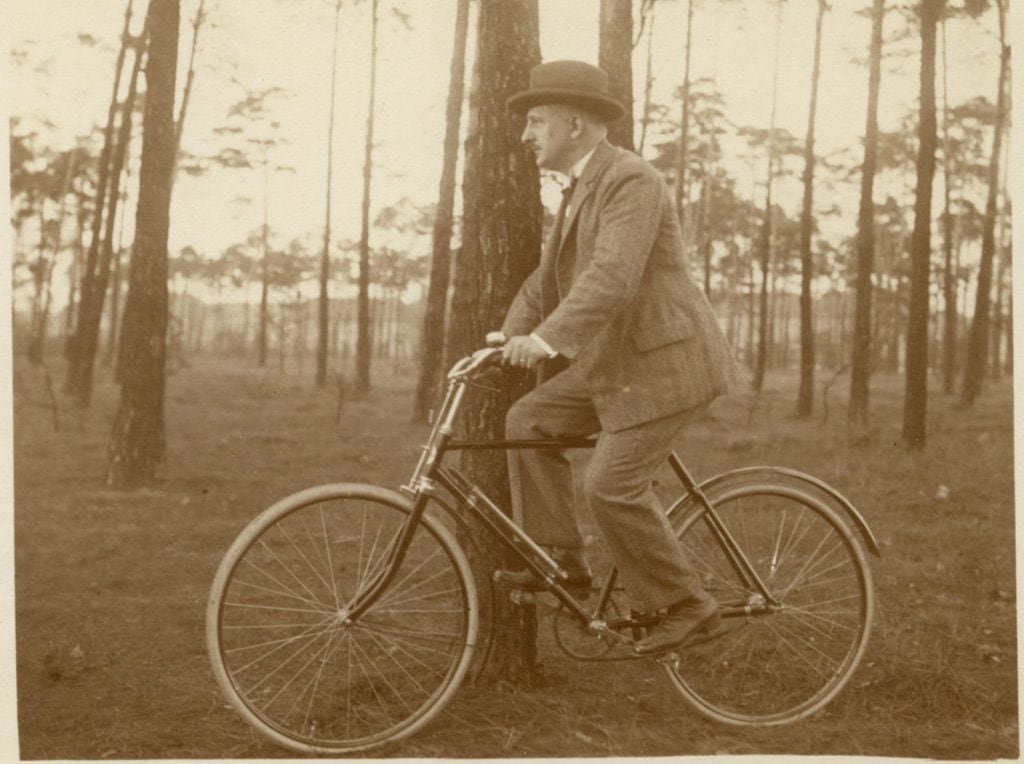
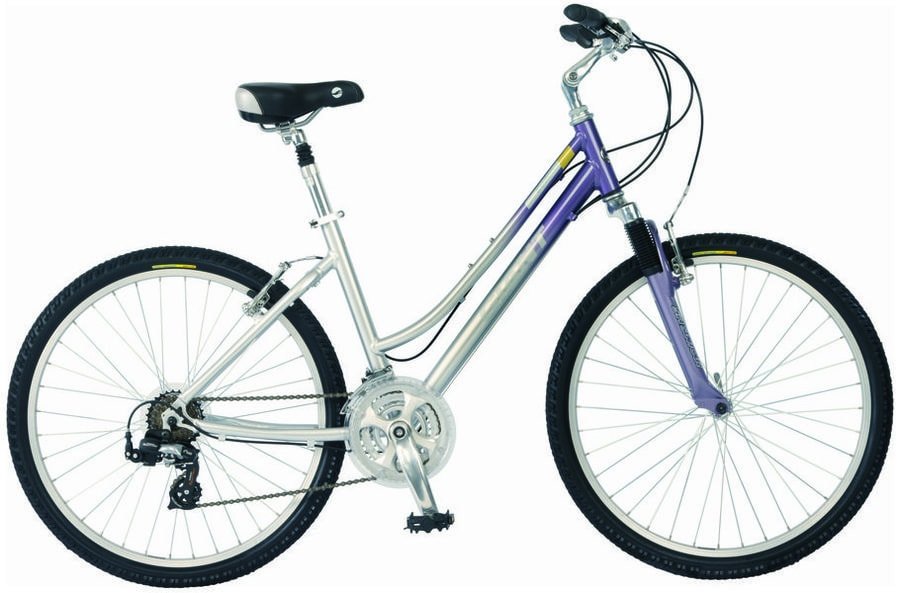
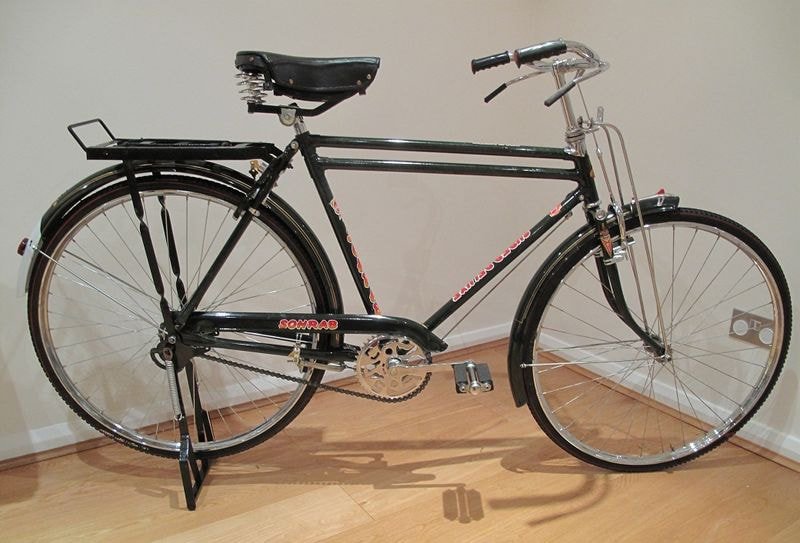
The recreational and sport applications of bike riding began to diversify and cater to all types of cyclists over the years.
Comfort bikes appeared as a way for novices and those with preexisting injuries or conditions to reap the rewards and enjoy bicycle riding for exercise and as a transport solution.
How Has the Comfort Bike Progressed Over the Years?
Comfort bikes were first introduced as a no-nonsense bicycle that prioritized comfort over performance.
Designs for comfort bikes have changed little in the last few decades. However, there are now many more components and accessories which allow riders to tailor their comfort bike to cater to their needs.
Whilst this is the same for every type of bicycle, the range of products available that are aimed towards comfortable cycling has expanded, making comfort cycling appeal to a wider audience of cyclists.
Who Should Use a Comfort Bike?
Almost anyone that can hop on a comfort bike will be able to ride one.
Comfort bikes are designed for those with little or no riding experience. The ergonomic design allows inexperienced riders to reap the benefits of bike riding.
Similarly, if you have existing or prior injuries that restrict movement or flexibility, a comfort bike takes it easy on your joints and muscles.
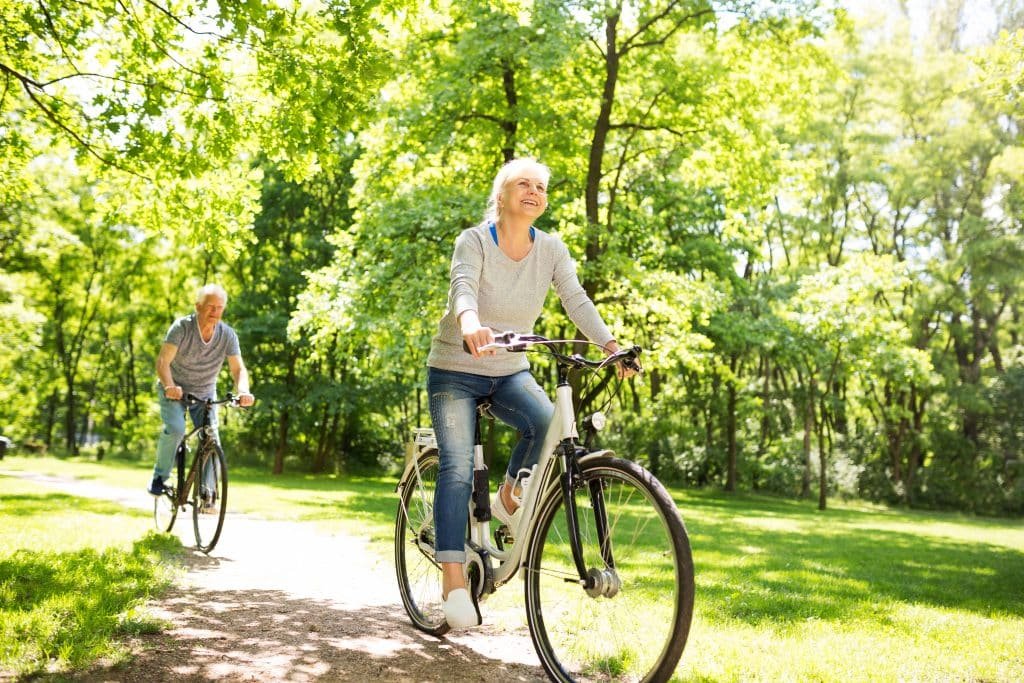
With their simple design, these bikes are also ideal for people who do not want to spend a lot of time and money on their bike.
Normally, you can expect to pay anywhere between £350 – 550 ($480 – $750) for a decent comfort bike, making these an affordable option for the majority of cyclists.
If you’re a commuter that wants to cycle to work by bike and don’t want to end up, hot, sweaty and flustered by the time you arrive, a comfort bike would be ideal.
Cycling to work, rather than adding to the levels of air pollution in our cities, is a great choice and a comfort bike will allow you to do this in a relatively stress-free manner.
Who Shouldn't Use a Comfort Bike?
Comfort bikes are not meant for experienced bikers looking to increase distance and stamina. Veteran cycling enthusiasts and racers will find a comfort bike too cumbersome for speed and efficiency.
If half the fun for you is tinkering with your bike and performing maintenance to keep it in top form, a comfort bike is not for you.

Among those who should not use a comfort bike include:
- Veteran bike riders
- Bike racers
- Mountain bikers
- Mechanically-inclined bike hobbyists
- Bicycle riders that want to go fast
- Competitive road cyclists
- Cyclists that live in hilly areas would be better off with a more agile bike
Comfort bikes are not designed to go fast, so if your goals are to optimize speed rather than relaxing and enjoying a smooth, easy sailing ride, there is probably a style type of bike that is a better fit.
What Competitions/Events Are Comfort Bikes Used In?
Comfort bikes are not sport bikes, and not used in any competitive formats.
They are far more likely to be used for a leisurely ride down a waterfront path or through neighbourhood streets than they are on a race track or other sporting event.
The only way to “win” when riding a comfort bike is to have the most comfortable, enjoyable, and satisfying ride without feeling discomfort or pain when finished with your journey!
Benefits of Comfort Bikes
Bike riding presents a wide range of physical and psychological benefits to help you lead a healthier and happier life.
Riding a bike on a regular basis can help reduce your risk of having a stroke or heart disease and taking up the activity with a comfort bike is a safe and comfortable way to get moving and maintain a healthy weight.[2]
Riding a comfort bike to work, the grocery store, or a friend’s house takes away the stress of dealing with other drivers, construction, or traffic jams.
Hopping on your bike is a healthier, less stressful, and often quicker method of transportation for short trips and it allows you to get to know your neighbourhood and the surrounding areas.
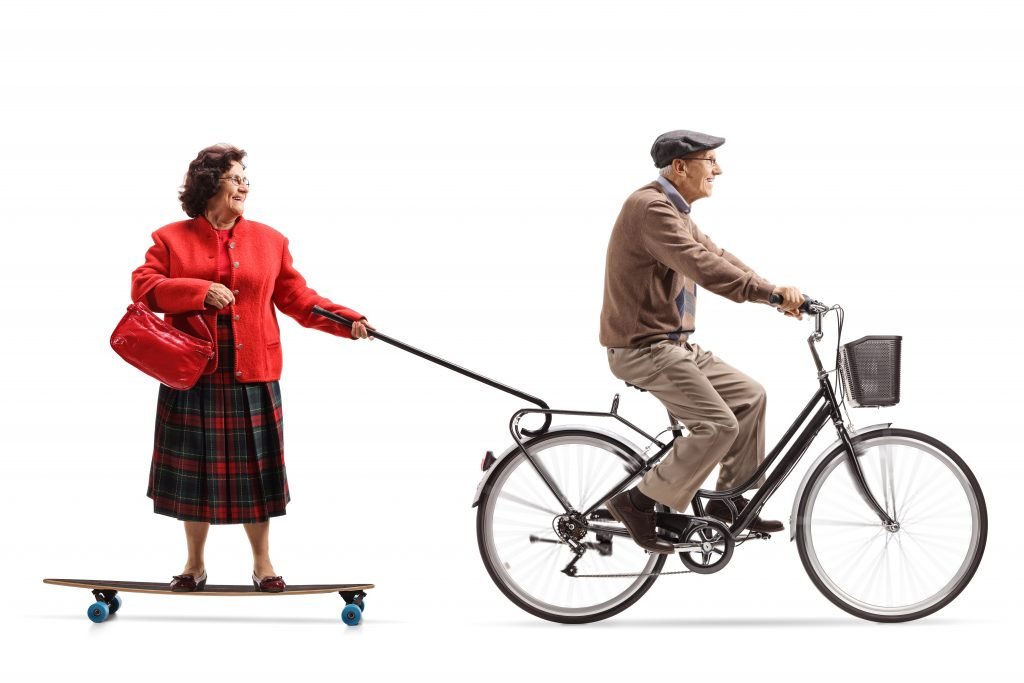
Additional benefits of owning a comfort bike include:
- Great, low-impact exercise
- Safe way to start riding for novice cyclists
- Eco-friendly transportation
- A stable, smooth, and safe ride for riders who struggle with balance
- A durable, reliable machine that will last for many years to come
- For short trips that don’t require precision or speed, comfort bikes are one of the best options, particularly if you live in an area that is relatively flat.
Risks Associated with Comfort Bikes
Risks associated with comfort bikes are similar to risks associated with any biking activity, but because of the target market of comfort bikes, riders may need to be extra vigilant about safety.
Novice riders and those with mobility issues are often drawn to comfort bikes due to the upright riding position and ease of use, but they may also be more prone to falls and accidents.
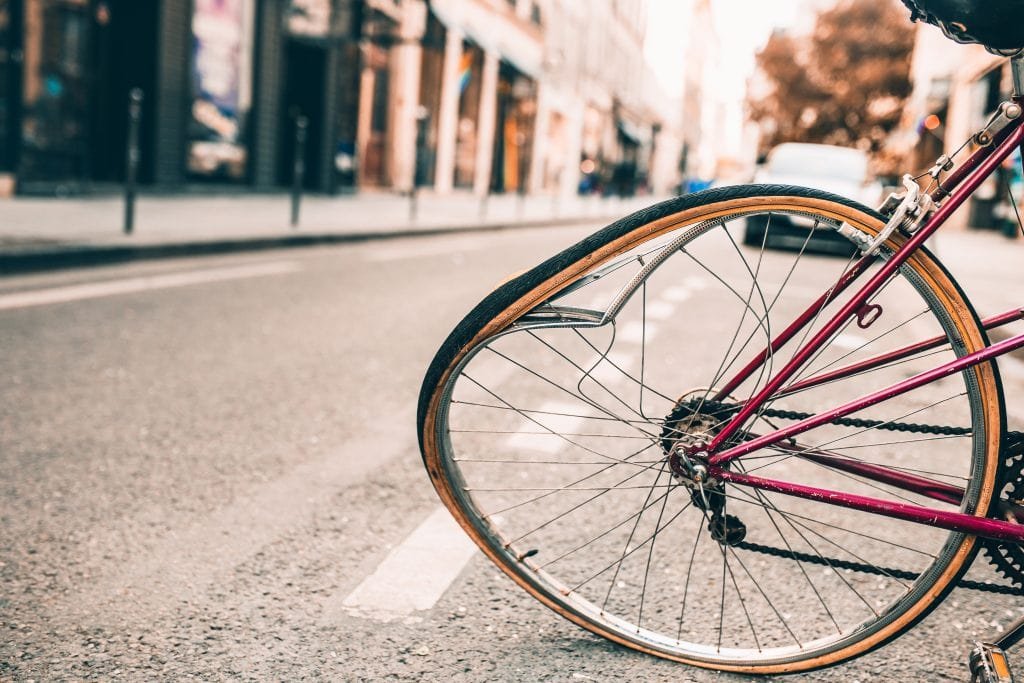
I advise any new cyclist to have a make themselves familiar with the rules for cyclists in the highway code and maybe even consider a cycling lesson. There are many charities
Safety gear, such as helmets, pads, long-sleeved tops, closed-toed shoes, and even gloves may be warranted to avoid scrapes, bruises, and injuries associated with bike riding.
If you have past injuries, especially in regards to your knees, back, hands or arms, you may want to ask your physician if you are able to ride a comfort bike safely.
Environmental Impact of Using a Comfort Bike
Riding a comfort bike has no negative impact on the environment.
Riding a bike is an eco-friendly activity that can offset the harmful effects of automobiles, and is a great alternative to fossil fuel-powered vehicles for your commute.
A comfort bike requires less maintenance or materials to keep it running properly than other bikes, making its carbon footprint even smaller.
As always, it’s important that you do your research and try to invest your money in a good quality bike, that will last you well, instead of opting for the cheapest option that will need replacing before you know it!
Does a Comfort Bike Require Anything to Keep Functioning?
A comfort bike is a fairly basic bicycle requiring minimal maintenance to keep it in top operating condition.
Outside of occasionaly oiling of the chain and making sure the tyres are adequately inflated, there is nothing special you need to do to keep your comfort bike running.
If you’re not savvy with bike mechanics, it’s a good idea to take your bicycle to a bike shop who will happily tune-up your ride and make sure everything’s as smooth as possible for you.
After all, there’s no point in opting for a comfort bike if its clunky and stiff to ride!
Does the Comfort Bike Require a Special Area to be Ridden?
A comfort bike is not designed for steep elevation changes or rough terrain.
This type of bike is best ridden in neighbourhoods, parks, and paved cycle paths.
Just about anywhere with paved paths is suitable for a comfort bike, but you will want to watch out for steep gradients, since a comfort bike may not have the necessary gears to be able to climb a hill easily.
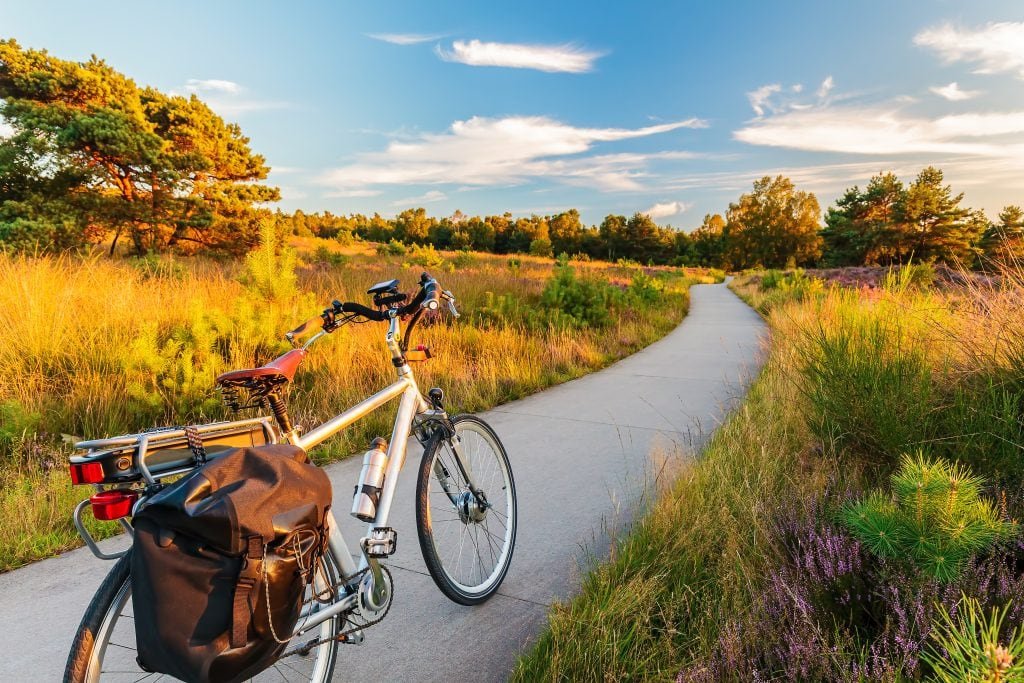
What Accessories are Recommended When Using a Comfort Bike?
There are a number of accessories you can add that may help increase your comfort, even more, when you go for a ride, including:
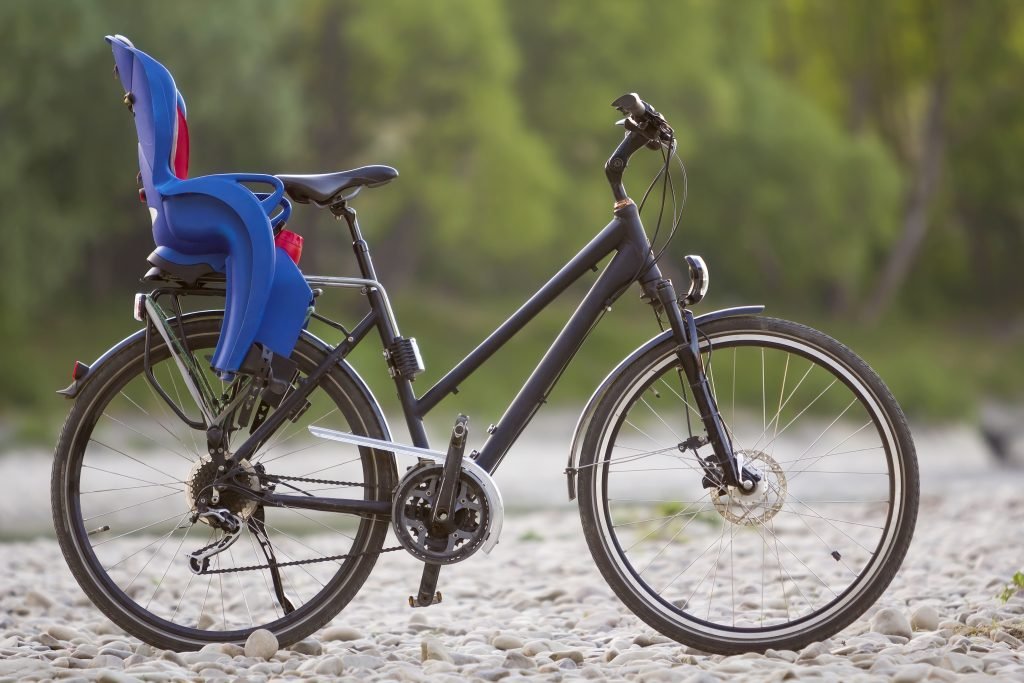
- Basket
- Bell or horn
- Mobile phone mount
- Padded handles and seats
- Reflectors and lights
- Child seat
- Saddle bag
- Sunglasses, hat or visor
- Tyre pump
- Water bottle holder
- Pannier
These accessories will make cycling, in general, more comfortable for you.
So if you’re looking to increase the comfort of any bike you’re riding, investing in some of these accessories before buying a completely new bike could be a potential money saver!
Conclusion - What Is a Comfort Bike?
So there you have it! Everything about comfort bikes.
In case you missed it, a comfort bike is considered a great starter bike if you are not a regular cyclist or haven’t ridden a bike in a long time. These classic bicycles make the ride smoother, easier, and more enjoyable while reducing the risk of injury or soreness.
With an ergonomic design that allows you to sit in an upright position rather than hunched over, comfort bikes are ideal for older riders or those with preexisting back or flexibility problems.
If you are unsure whether you are physically fit enough to ride a comfort bike, don’t hesitate to speak with a doctor or physiotherapist.
[1] https://archive.org/details/richards21stcent00ball/page/32/mode/2up
[2] https://www.nhsinform.scot/healthy-living/keeping-active/activities/cycling#:~:text=Health%20benefits,such%20as%20depression%20and%20anxiety.



